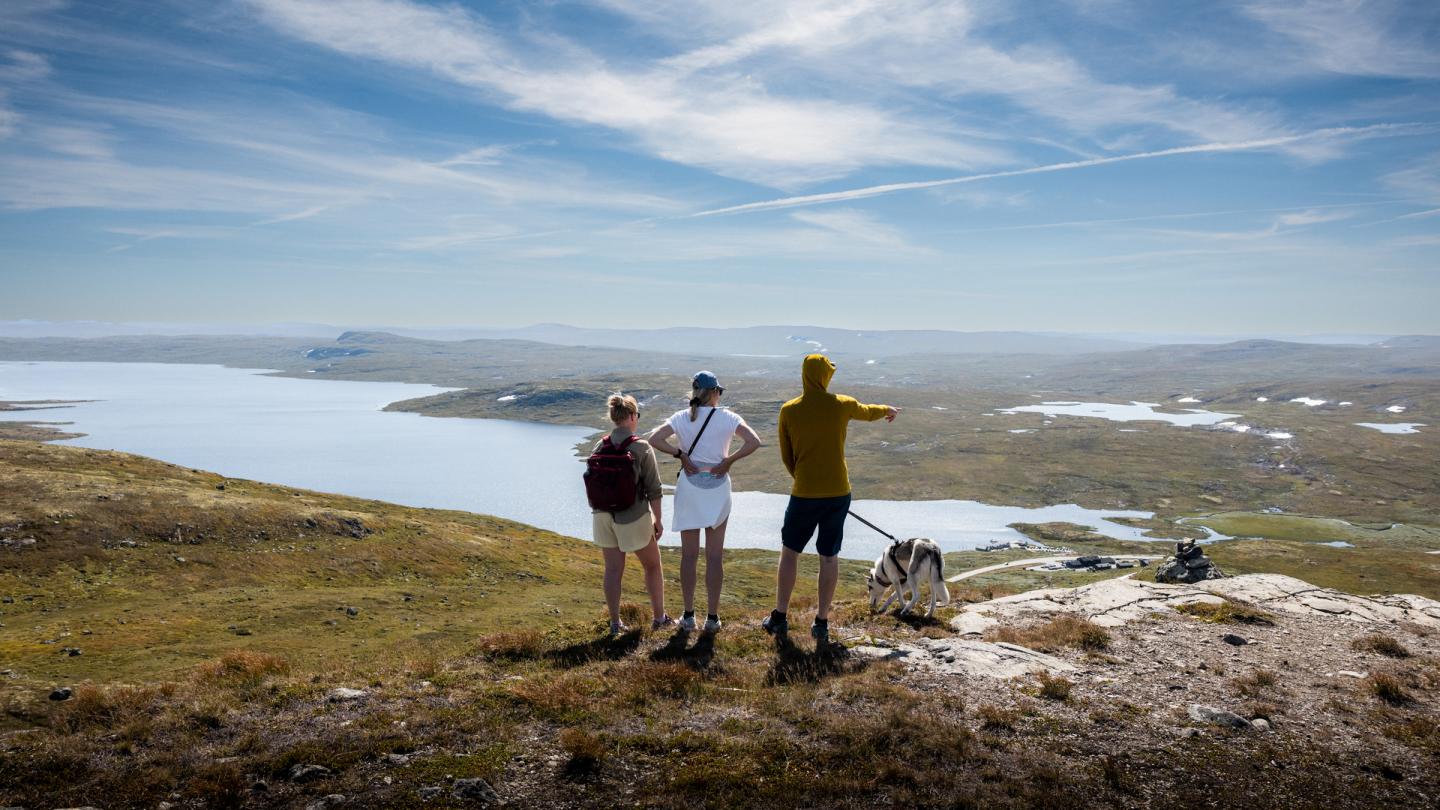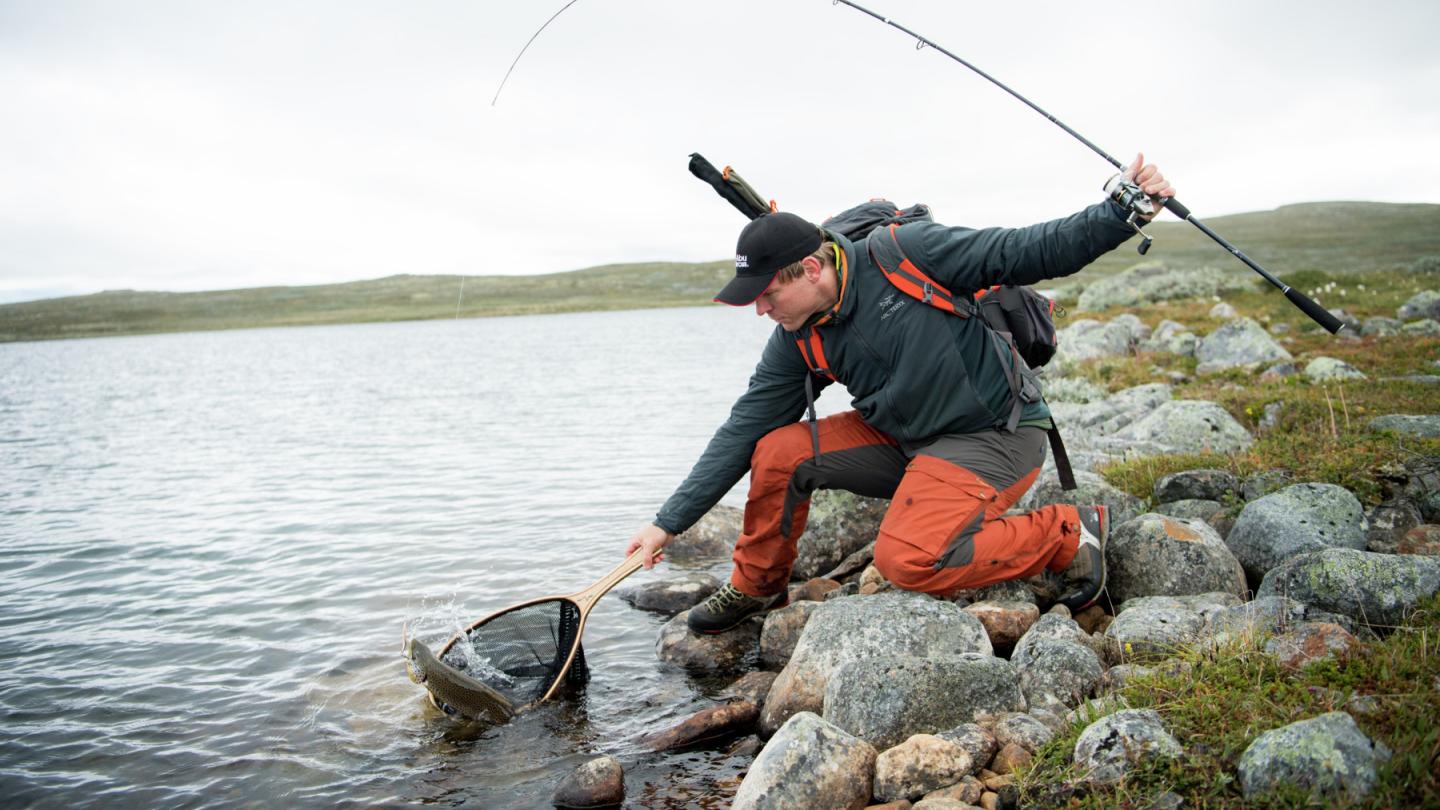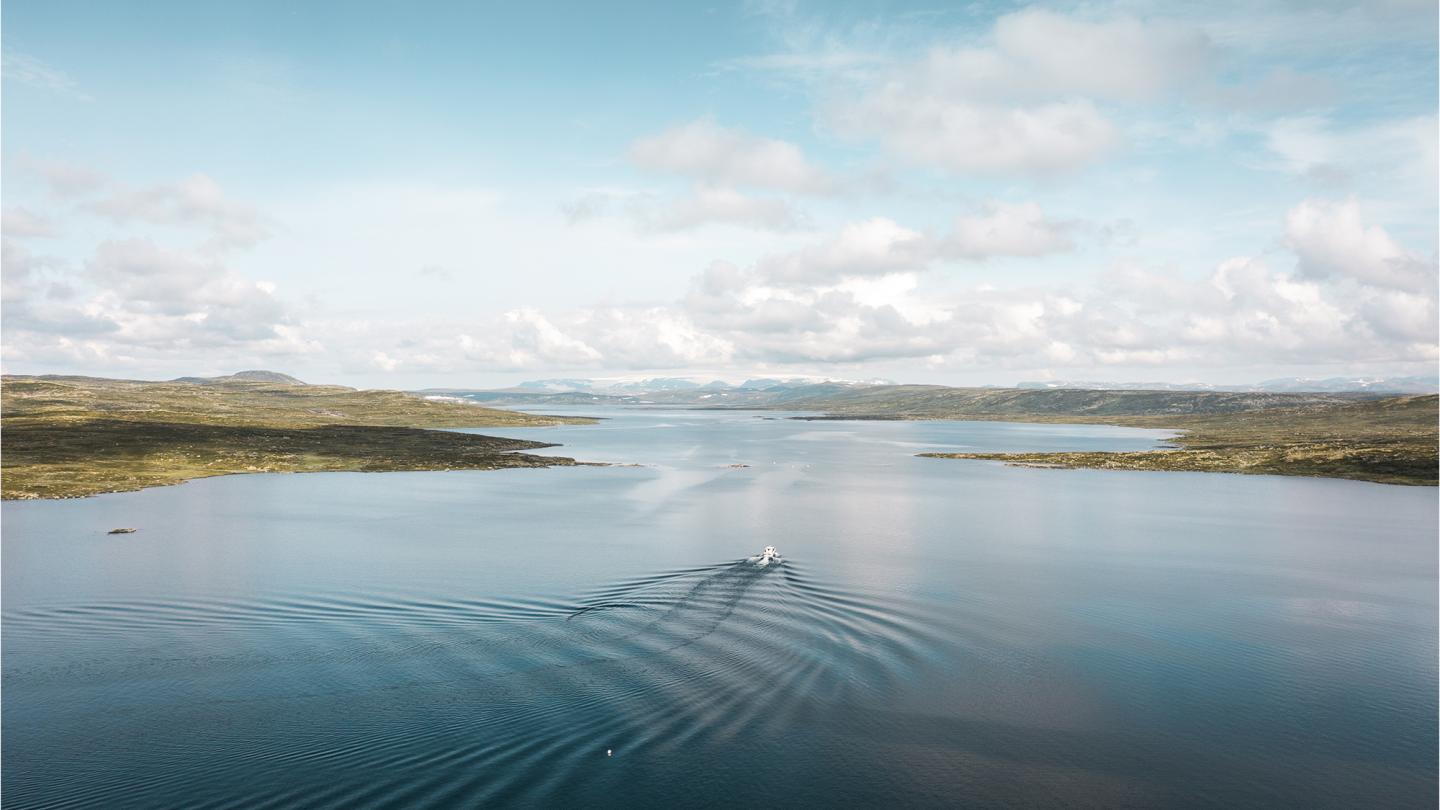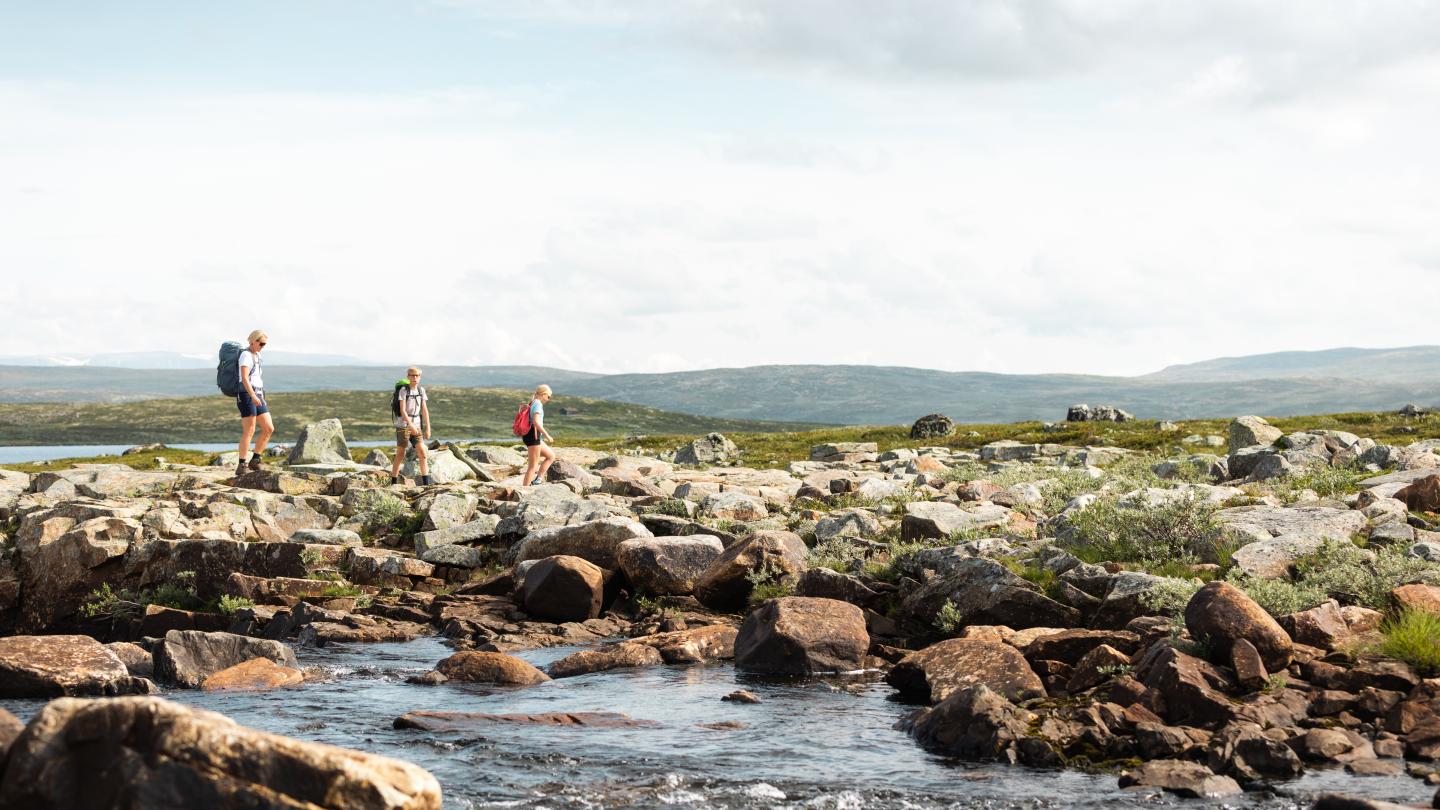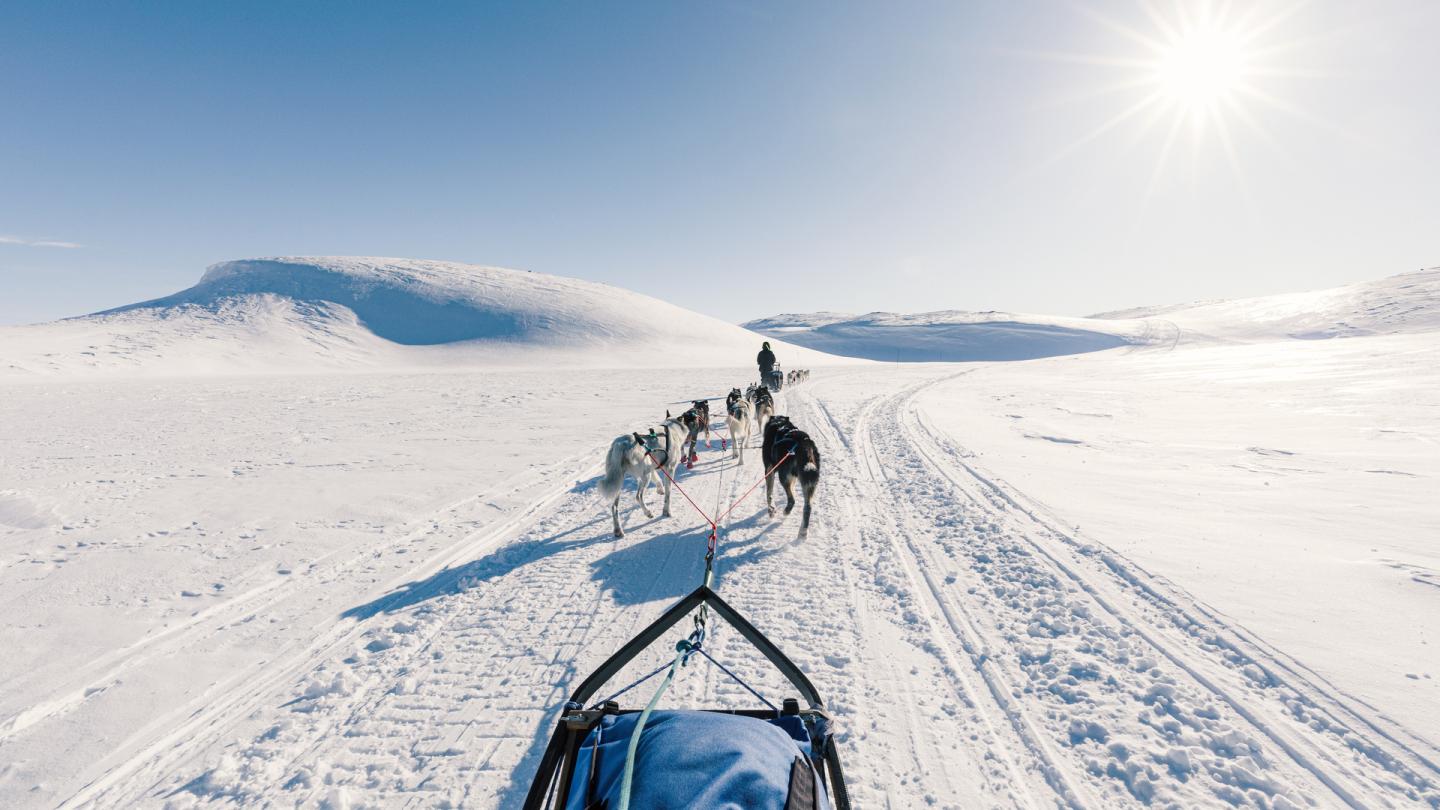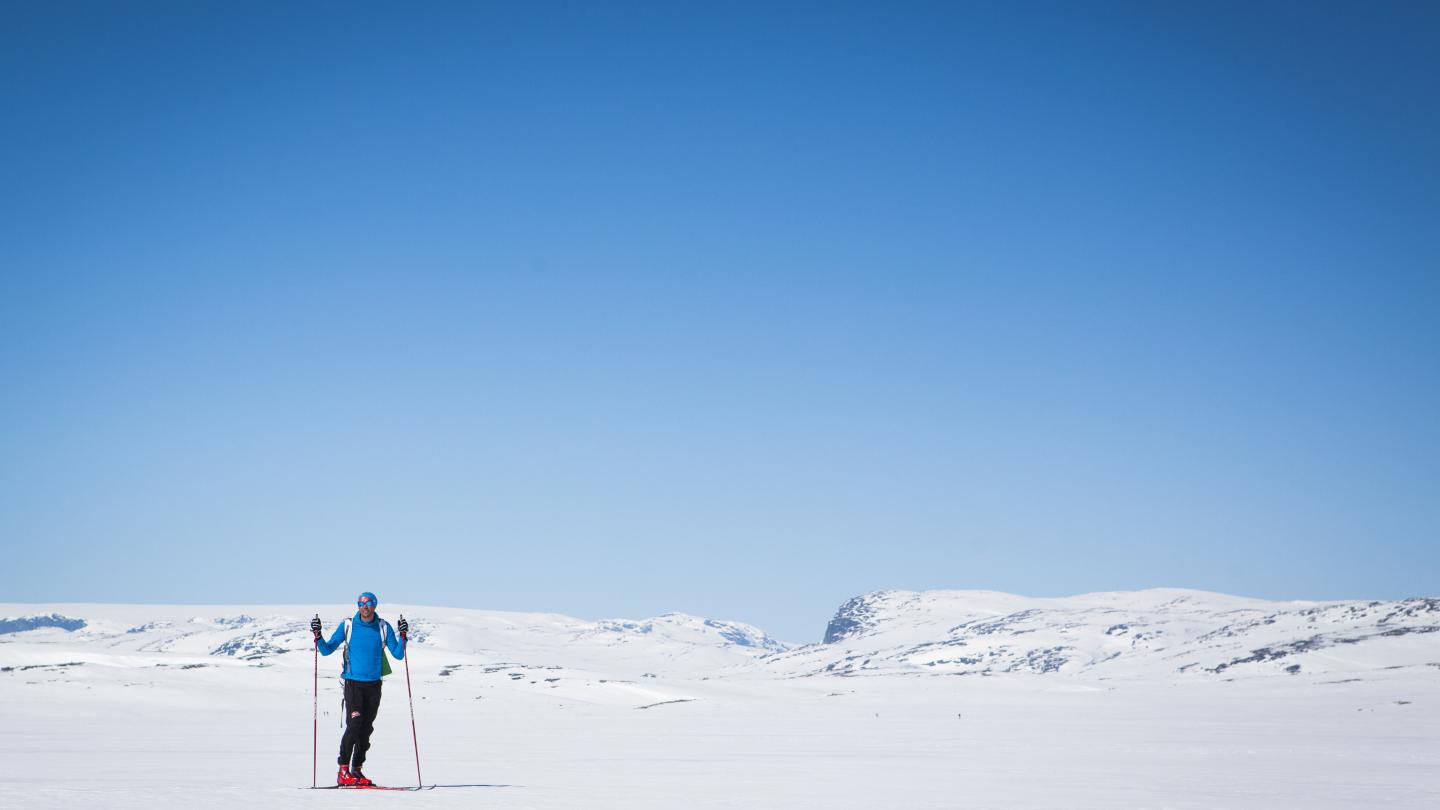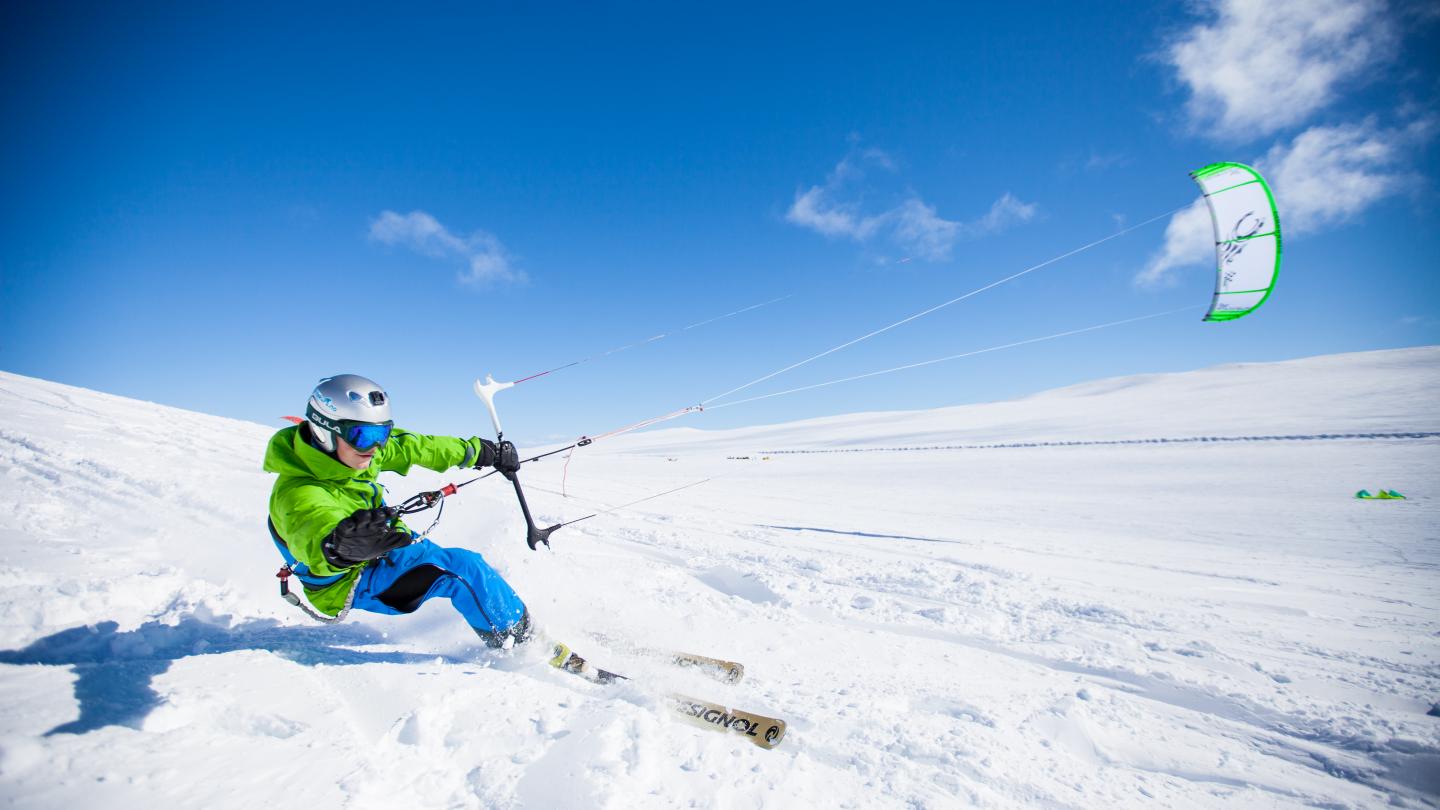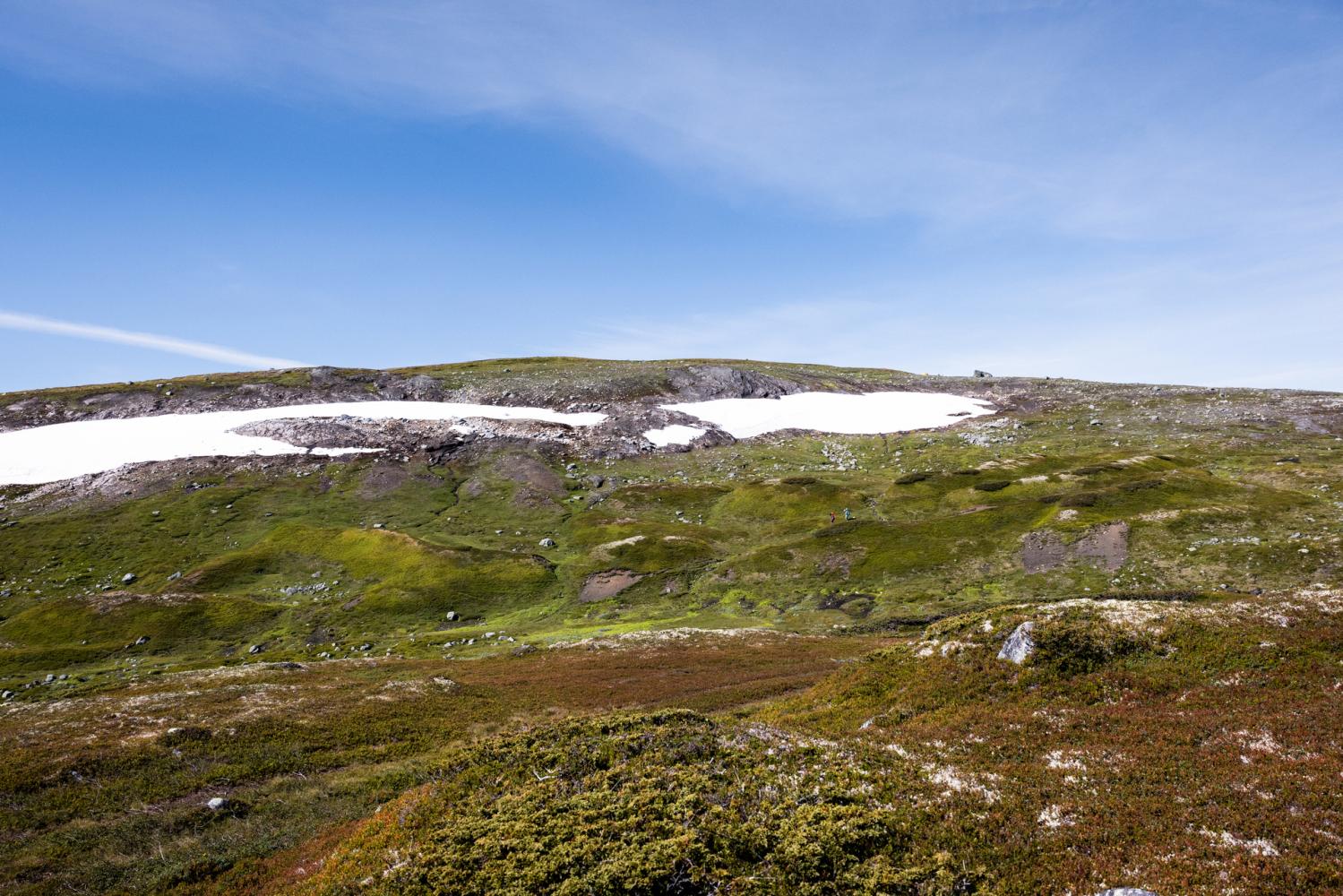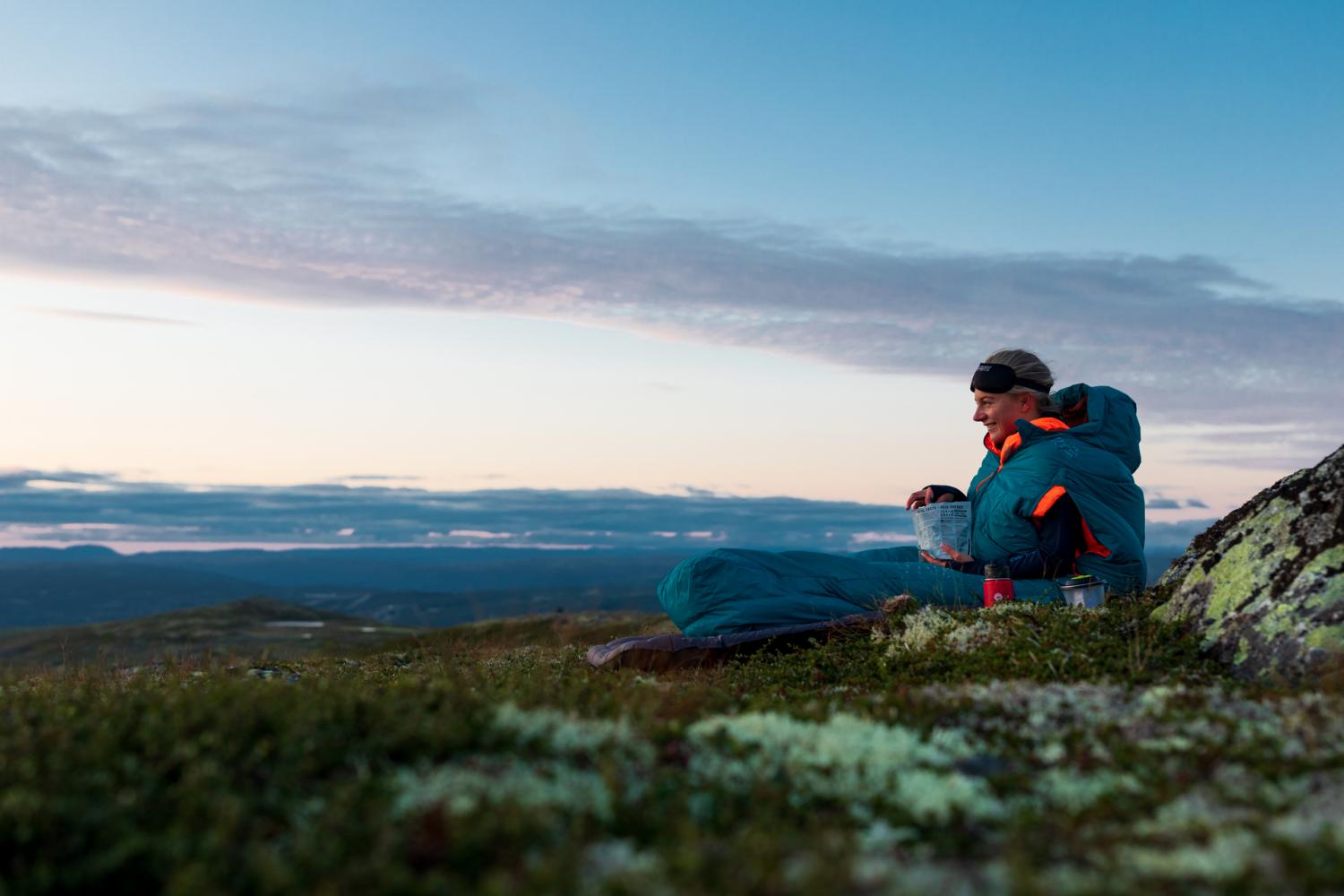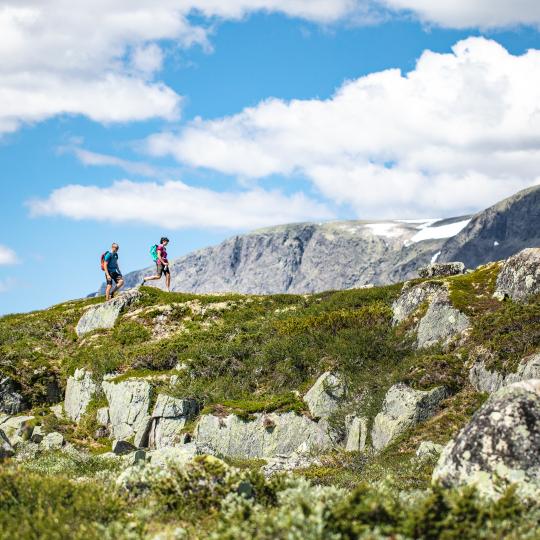What to experience on Hardangervidda
Humans have been walking on Hardangervidda for over 8,000 years, and you can see several traces of old roads, fishing facilities, settlements and huts. In recent times, there are many exciting things to experience on Hardangervidda.
Vøringsfossen is one of the most famous waterfalls in Norway. The waterfall is a whopping 182 metres, and plunges from the Hardangervidda plateau into Måbødalen. Here, it is well arranged to both walk over and around the waterfall so that you can see it from all angles. Hardangervidda offers fantastic experiences, from Geilo where the road slowly climbs upwards all the way to the plateau where the road gently bends over the large area downwards to a narrow, steep and winding road down Måbødalen past Vøringsfossen before you suddenly find yourself in the small village of Eidfjord in the heart of the Hardangerfjord.
Rallarvegen has been named Norway's most beautiful bike ride several times. It is not without reason, Rallarvegen is a journey through powerful nature, cultural monuments and history. It is 82 km long and stretches from Haugastøl in the east to Flåm in the west. Whether you cycle Rallarvegen or spend the night at Finse, it is worth a visit Rallar museum. It is located in Eastern trainstall, here you can see pictures and an exhibition about the history of the construction of the railway from 1894-1909.
Halnekongen offers boat transport from Halne Fjellstugu (located at road rv 7) and 13 km in to Hardangervidda. Here you get a fantastic starting point for walks into the national park. The nearest DNT cabins are Heinseter and Rauhelleren, and many people choose to spend the night at these cabins before continuing into the national park or returning to Halne Fjellstugu.
Winter on Hardangervidda in nice weather is one of the most beautiful things you can experience. A snow-covered landscape as far as you can see. It is possible to go snowshoeing and skiing on Hardangervidda in winter. Here you will find marked trails from cabin to cabin, or you can make your own way on mountain skis. See interactive map on ut.no of cross-country tracks and serviced and unserviced cabins on Hardangervidda..
Fishing on Hardangervidda
Part of the waters on the eastern side of Hardangervidda belongs to Geilo Hunting and Fishing Association. Fishing licenses can be bought at the Tourist Information Center and the sports shops in Geilo, but also at most tourist cabins. There are also a number of private waters, usually you can buy a fishing license for these at the nearest tourist cabin. More about fishing in Geilo
